Cecily Brown: Will Gompertz reviews the British artist's show at Blenheim Palace ★★★★☆
- Published
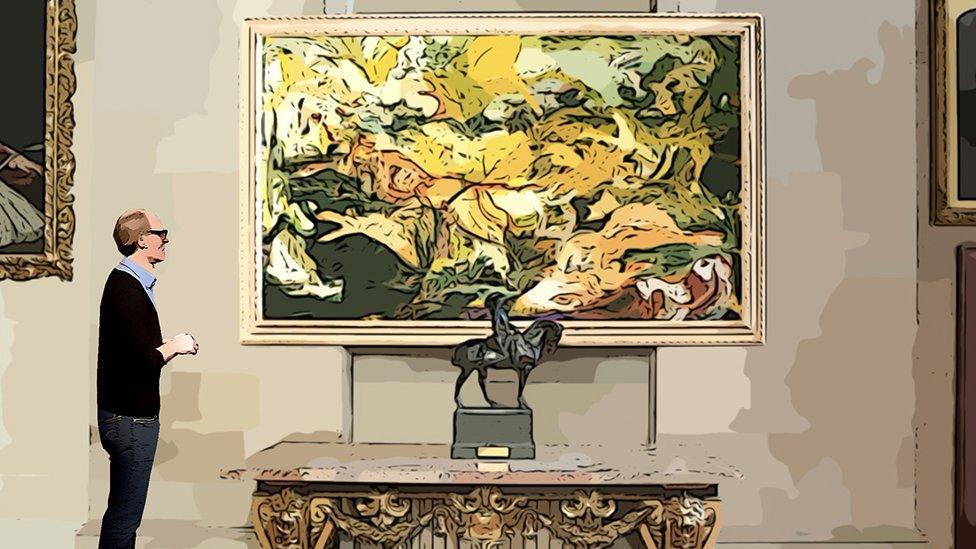
What do you do if you own a massive country house, which is unbelievably gorgeous but also ruinously expensive to run?
Selling is not an option because it's been in the family for generations and your one and only job as the aristocrat-in-residence is to pass the money-pit down the family line. But that leaky roof in the east wing really needs sorting, the damp is playing havoc with the Reynolds portrait. You could always flog off the family silver, but the smart money knows it makes far more sense to flaunt it...
Open up your palatial des res to the general public and let us see your private parts.
That'll pay for the roof, but not for the army of gardeners needed to keep the landscape looking like a Gainsborough painting. You need another way of attracting punters to pay-per-view. Festivals are all well and good but are very risky, and the massed ranks of blue portaloos ruin the vista across the parterre.
What to do?
The fashionable answer is to pick up the phone to an old mate running a fancy contemporary art gallery in Mayfair and offer your magnificent stately pile as a venue for an exhibition. The juxtaposition of historical grandeur and avant-garde art is all the rage nowadays. Lord Cholmondeley is exhibiting Anish Kapoor at Houghton Hall in Norfolk, the Earl of Harewood is showing Kate MccGwire at his place in Yorkshire, and over in Oxfordshire Lord Edward Spencer-Churchill has just finished installing 24 voluptuous paintings by art world favourite, Cecily Brown.
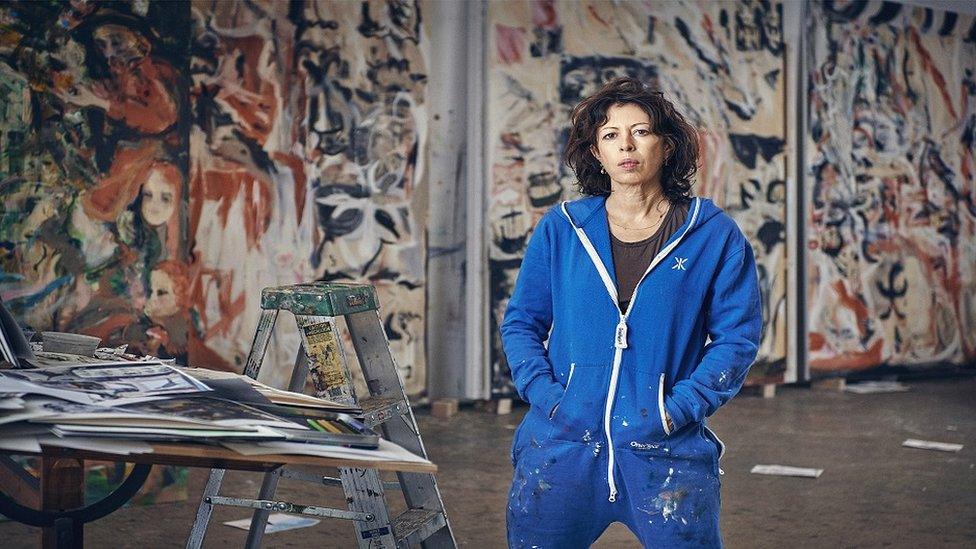
Cecily Brown in her studio
It is quite unlike last year's contemporary art show presented at his Blenheim Palace home, which featured a retrospective of the satirical works by the Italian artist Maurizio Cattelan, including a now notorious golden lavatory that was spirited away one night never to be seen again (police continue their enquiries).

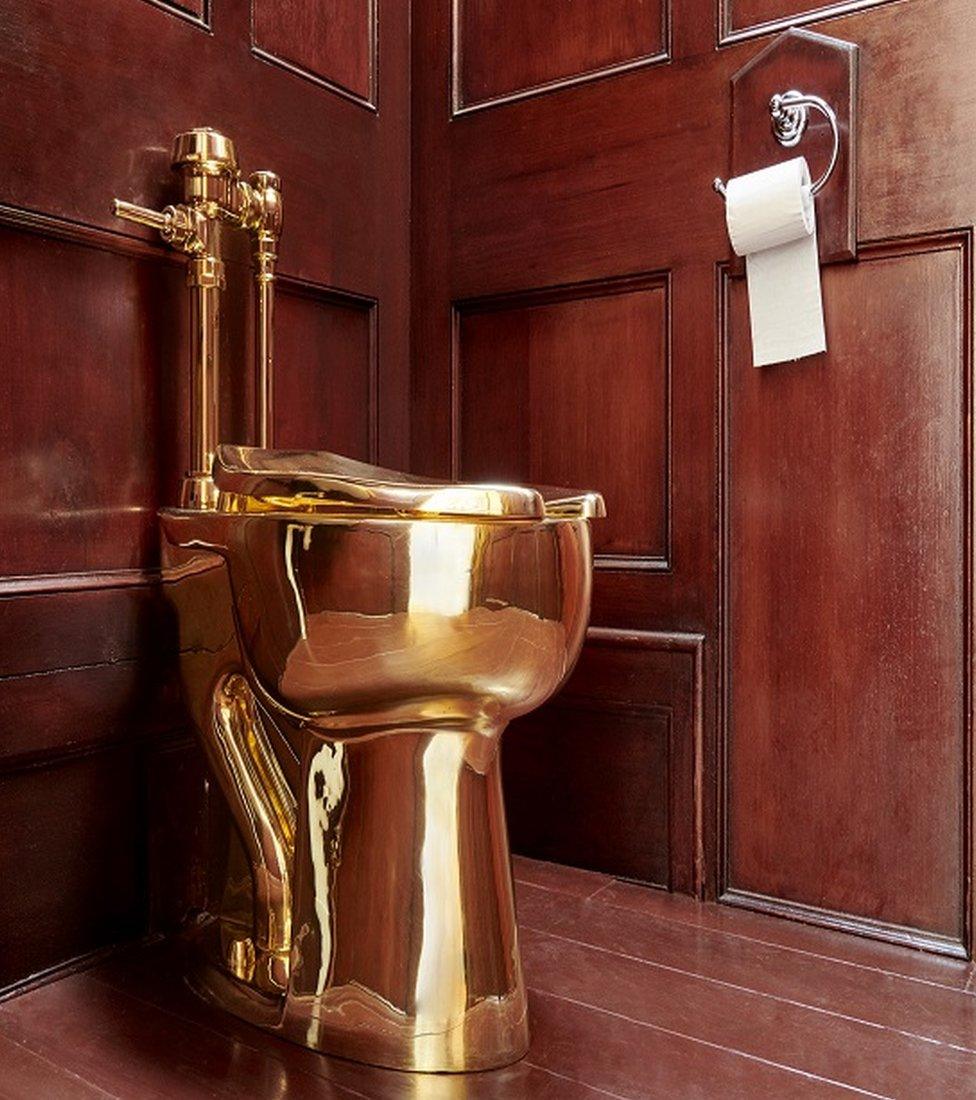
Maurizio Cattelan's gold toilet, America, 2016, Victory is Not an Option, was stolen when it was on display at his show at Blenheim Palace last year

This time around the art on display consists of new work, produced by Brown in direct response to the building and its contents.
When Ai Weiwei's work was shown here it stuck out. As did Cattelan's.
Not so Cecily Brown's expressionistic paintings, which are to the manor (well, palace) born. Her art and Blenheim go together like a butler and a tailcoat, it is a marriage made in Baroque heaven. Or, maybe that should be Baroque hell. Because there is a darkness lurking in her pictures of savage hunts and pastoral England that summon ghosts from the Palace's past. It was designed by Sir John Vanbrugh as an ostentatious celebration of victory over European neighbours, a nationalistic show of confidence and self-determination that feels a long way from the uncertainties of today.
Blenheim was a statement about what England had become; Cecily Brown's paintings are questions about what will become of England.

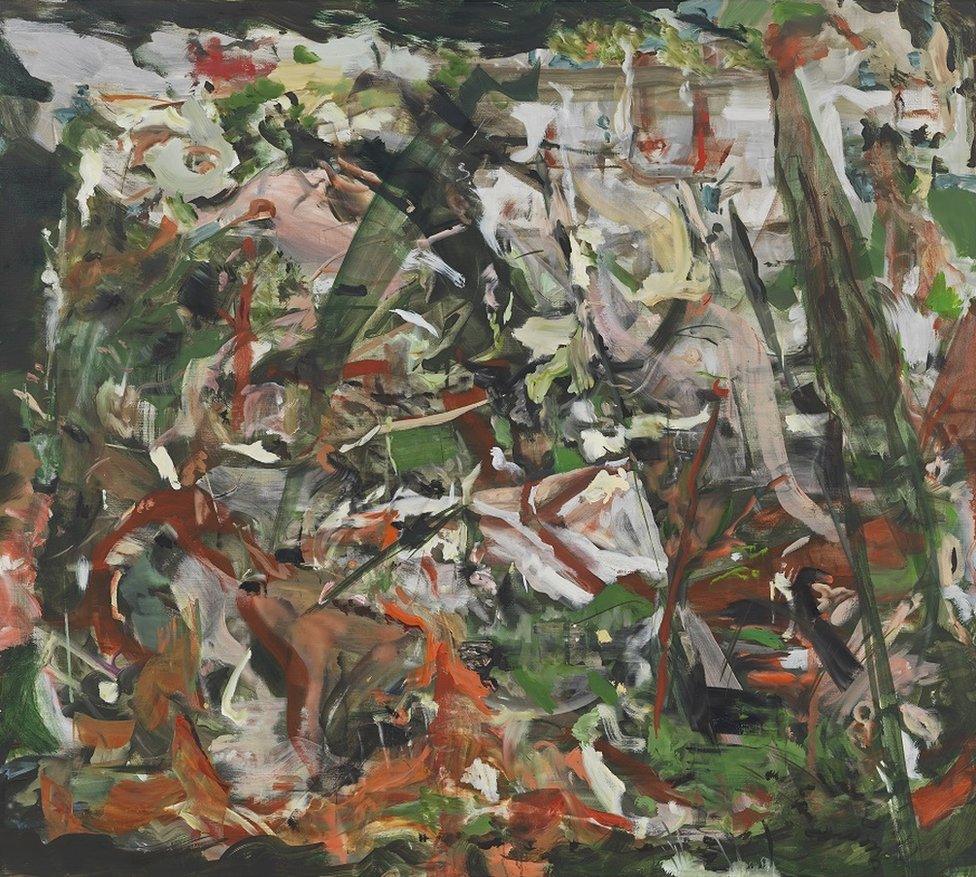
There'll always be an England, 2019, by Cecily Brown

The British artist has lived in America for the past 26 years, and has found it strange to witness from afar the changes in her mother country. You can sense her unease, both in the historical and social context of Blenheim, and the current state of flux in the UK.
That tension between past and present concerns is captured in a large rectangular painting called Dog is Life, which hangs high above a mantelpiece in the Green Writing Room. The title comes from a song by The Fall, which itself comes from reworking of William Blake's Jerusalem. Myth, romance, violence and dark satanic visions in England's green and pleasant land - it's all there in Dog is Life.
There is a Rubensesque quality to the swirling, bloody drama unfolding under a bright blue sky. There's carnage for sure, but you're in the midst of it all and it's difficult to work out what exactly is going on. The terror and agony and suffering made explicit in the open-mouthed hound at the foot of the picture that bears comparison to the horse in Picasso's Guernica. It is a contemporary image that looks as if it has been there forever: an epic opera in paint.
It is a great picture.

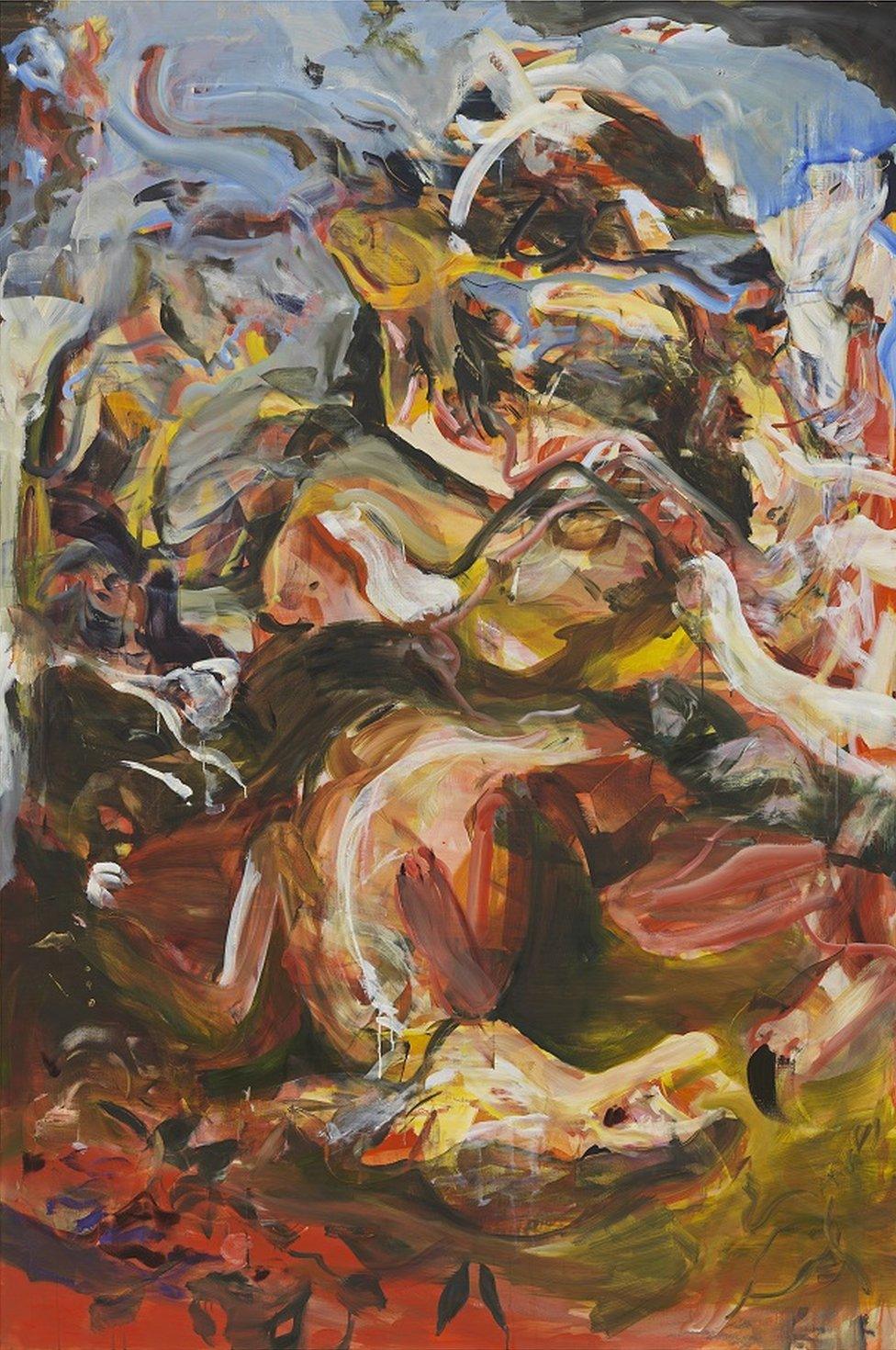
Dog Is Life, 2019, by Cecily Brown

There's plenty more romanticism in this largely excellent show in which Brown's paintings have been slyly placed allowing them to creep up on you like a shadow rather than shout in your face. There are some spectacular successes, such as two beautifully balanced semi-abstract landscape paintings that face each other towards the end of the exhibition.
Shepherd's Delight and The Forrest Festivals evoke Richard Dadd's mystical visions most famously seen in his intense and strange The Fairy Feller's Master-Stroke (1855-64).
That's a starting point.
But Brown's handling of paint and harmonic use of colour to build up pictorial detail has an expressionistic energy to match Kandinsky or De Kooning in top form. These pictures are virtuosic, a definitive riposte to anyone who dares say painting is dead.

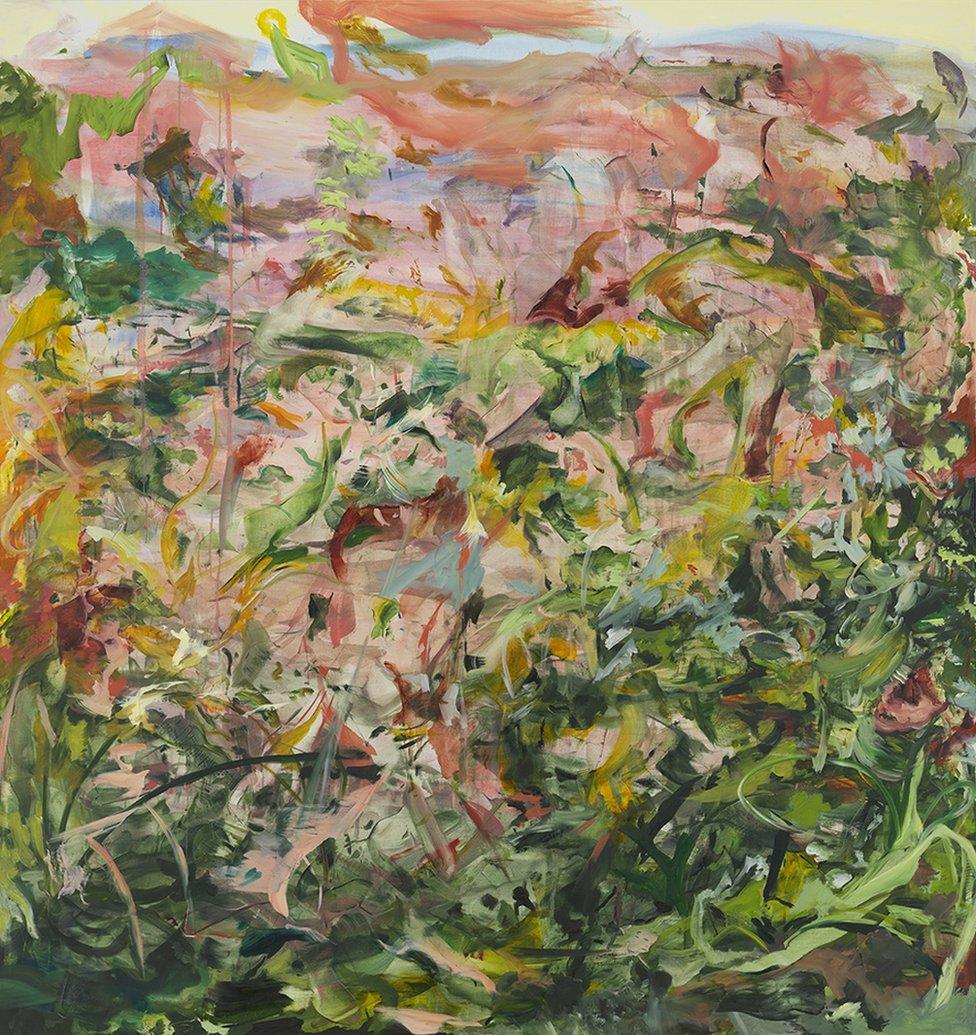
Shepherd's Delight, 2019, by Cecily Brown

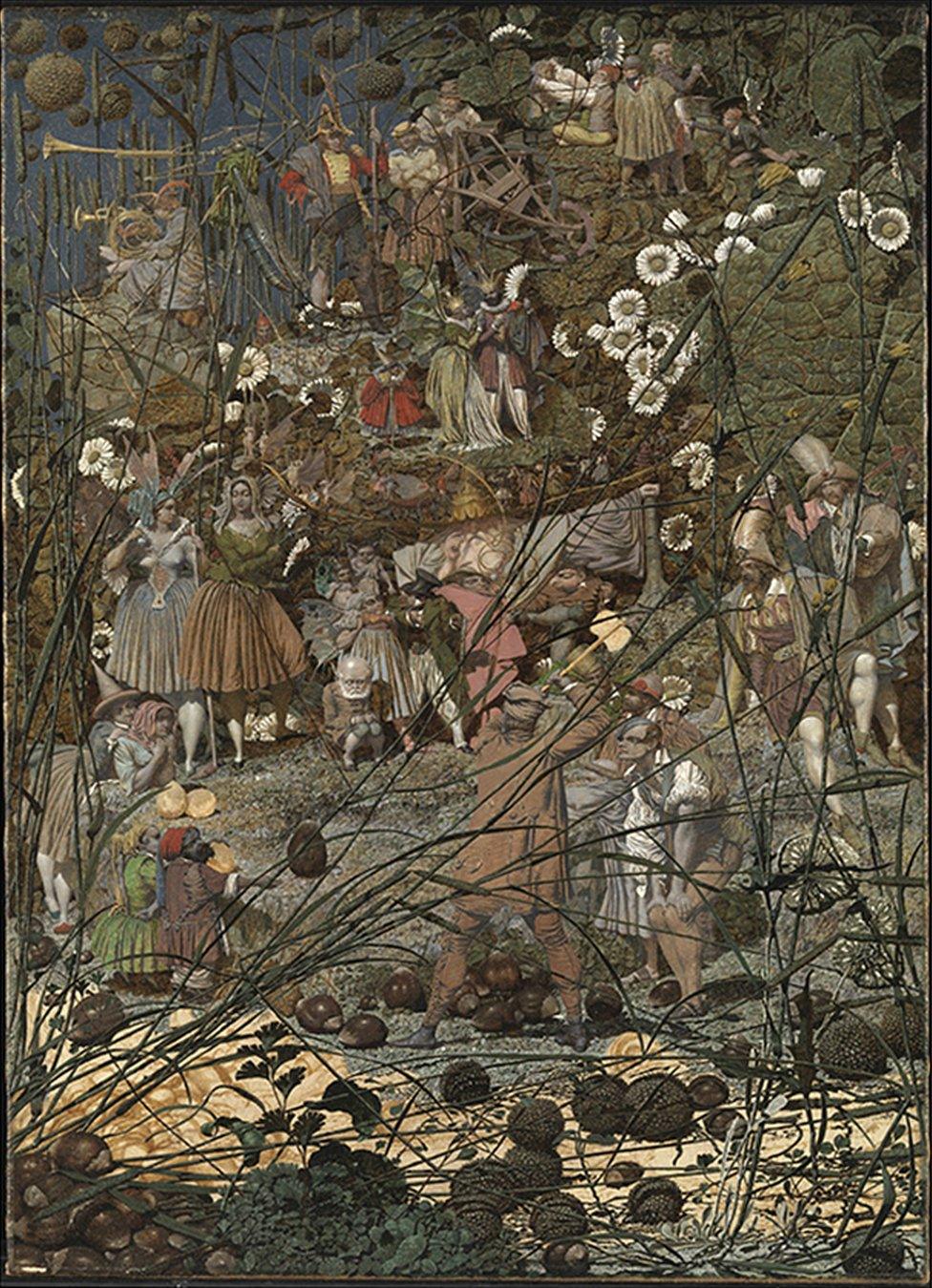
Richard Dadd's The Fairy Feller's Master-Stroke, 1855-64 (which is on display at Tate Britain from 12 October 2020)

There are a few misses to go with the many hits, most notably when Brown allows figuration to dominate.
Hunt After Frans Snyders is a faithfull-ish re-working of the 17th Century Flemish painter's Boar Hunt (1625-30), but it looks weak and unbalanced when compared to most of her other work in the show.

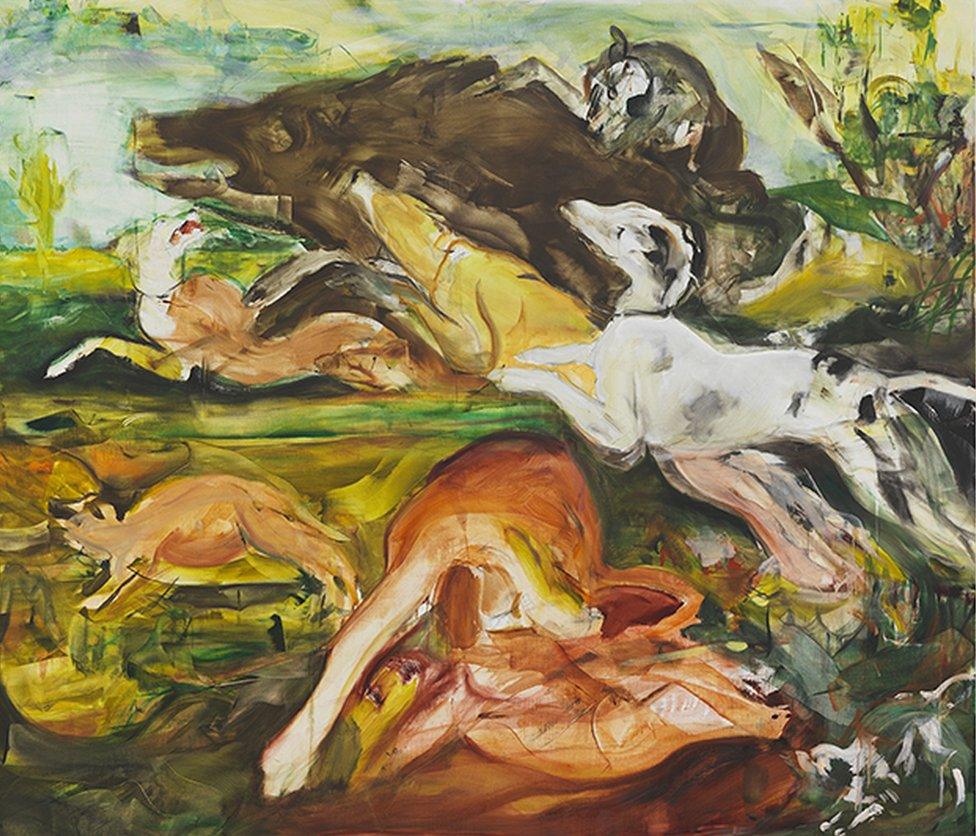
Hunt After Frans Snyders, 2019 by Cecily Brown

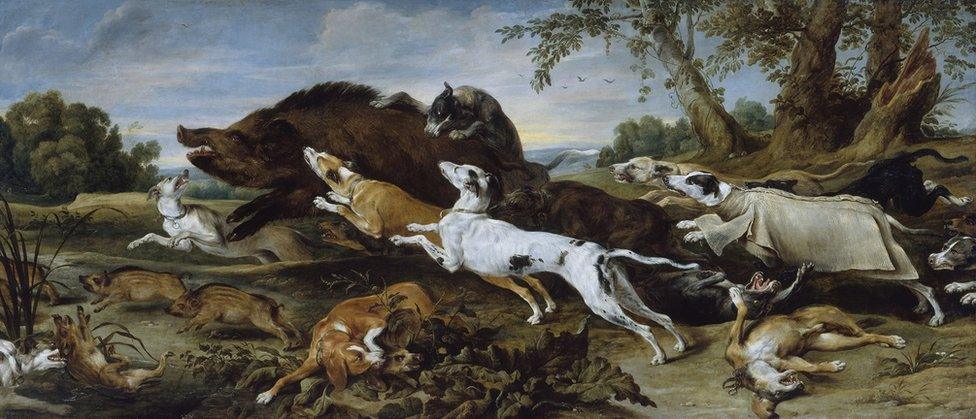
Boar Hunt (about 1625-30) by the Flemish artist, Frans Snyders
The same goes for her grand finale piece, a huge four-panel work called The Triumph of Death, which takes a 1446 Italian fresco with the same name as its inspiration.
Unfortunately, Brown's version lacks any emotional charge or visual impact, and appears to be a case of an artist making a big picture simply because there was a big space to fill.

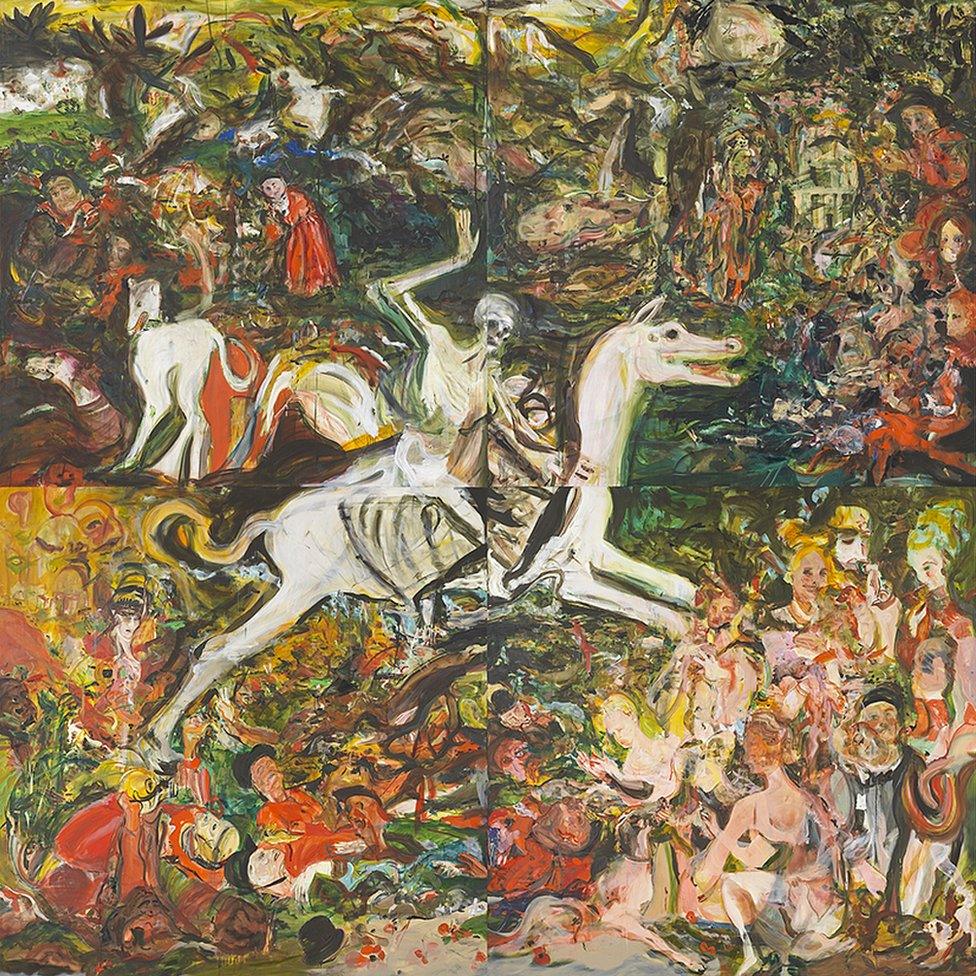
The Triumph of Death, 2019 by Cecily Brown


The Triumph of Death (about 1446) by unknown artist, is at the Palazzo Abatellis in Palermo
It is a shame, because you end up leaving a very good exhibition of contemporary painting, some of which genuinely gets your pulse racing, with a bit of a letdown.
Still, maybe that's meant and it is a prescient comment on the shortcomings of grand statements and larger-than-life leaders riding recklessly into an unknown future.
Recent reviews by Will Gompertz:
Follow Will Gompertz on Twitter, external
